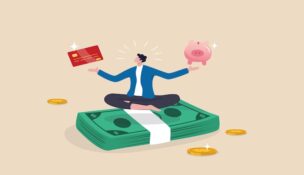

How to win big like these guys did
Ron Phillips //February 23, 2012//
We can learn a lot from copying others. I grew up with two older brothers and an older sister. I had a lot of examples to follow. Not to mention all of the games of “follow the leader.”
Who should we follow in the investing world?
John Paulson is a billionaire hedge fund manager. He is very good at what he does. He made $1 billion betting against mortgages, before we were all wise to the situation. He did even better with his long-term position in gold, netting billions more. Similarly, Jeff Greene became a newly minted billionaire by shorting the mortgage mess. He was the first individual investor to ever use this particular strategy reserved for institutional investors. Now he is working on his second and third billion.
THE BIGGEST WINNER
Who was the best trader during the Great Recession? The answer may shock you. They logged more than 300 percent returns, totaling about $2 trillion in gains. They invested at the lowest depths of the economy. Who was this rogue group?
The Federal Reserve.
What is best about their success is that, unlike Paulson and Greene, normal investors can follow “The Fed Approach.”
1. BUY “WHEN THERE’S BLOOD IN THE STREET”
That sounds kind of jagged but it is classic “value” investing. Many of the investing greats are value investors. They buy distressed and depressed assets when others are running for cover.
Part of this idea is having the courage to do things differently. This contrarian investing does not always pay off but it can lead to some bargain buys and decent returns. One of my clients wanted an individual stock. I recommended Starbucks at about $9 per share, after the market collapsed in 2009. It is currently about $48 per share. Sometimes courage pays off.
2. HOLD FOR LONG-TERM GAINS
The Fed started buying years ago. They are still holding these assets. They will probably hold for years to come. For a regular investor, holding for over a year creates a lower tax burden when selling. Holding investments longer can also help you to pay less in fees or commissions. At the same time it can discipline your approach. Instead of trading regularly, you buy a solid portfolio and hold on for several years.
3. UNDERSTAND THE ASSET
The real genius of the Fed was in understanding the stability of mortgage-backed securities. Remember the panic surrounding housing assets? It turns out that was the best, cheapest time to load up on mortgage bonds. According to FederalReserve.gov, they are holding $840 billion in these investments.
4. BUY FOR INCOME
This is my favorite. If you have a healthy income from your value portfolio then you can hold tight for years, collecting steady earnings. That is exactly what the Fed is doing. They have had record investing income, totaling over $200 billion in three years. Those are results worth following.

























